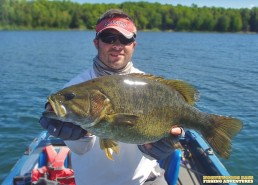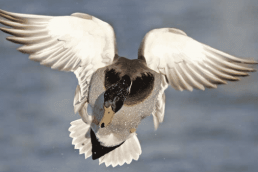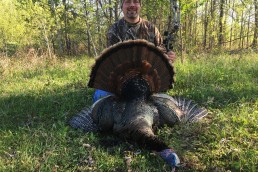Giant Smallmouths from Northwoods Trout Waters
SHARE THIS POST
Know what happens when trout get stocked in western American lakes? Their bass fish grow to huge, potential-world-record sizes as a result of feeding on stocked trout. Largemouths of that caliber simply don’t exist naturally in North Country waters, as we are in too cold a latitude to grow such specimens. But what our trout waters do have growing in them are big smallmouths.
Unlike out West, these trout aren’t what’s entirely feeding and growing the big smallmouths. What’s helping them to achieve monstrous sizes on these two-story cold-water fisheries is a diverse menu of pelagic species. Cisco, smelt, whitefish, and alewife forage sustains the trout while simultaneously feeding its secondary species, smallmouth bass. Their sizes, growth rates, and weights are a product of availability and abundance. To maintain their hefty weights, big smallmouths require a combination of these oily, protein-rich forage species.
Whether or not smallmouths prey on stocked trout like western largemouths do, I’m sure that many of them also get eaten by default. Stocked and native baby rainbow trout are extremely vulnerable to predation, anywhere.
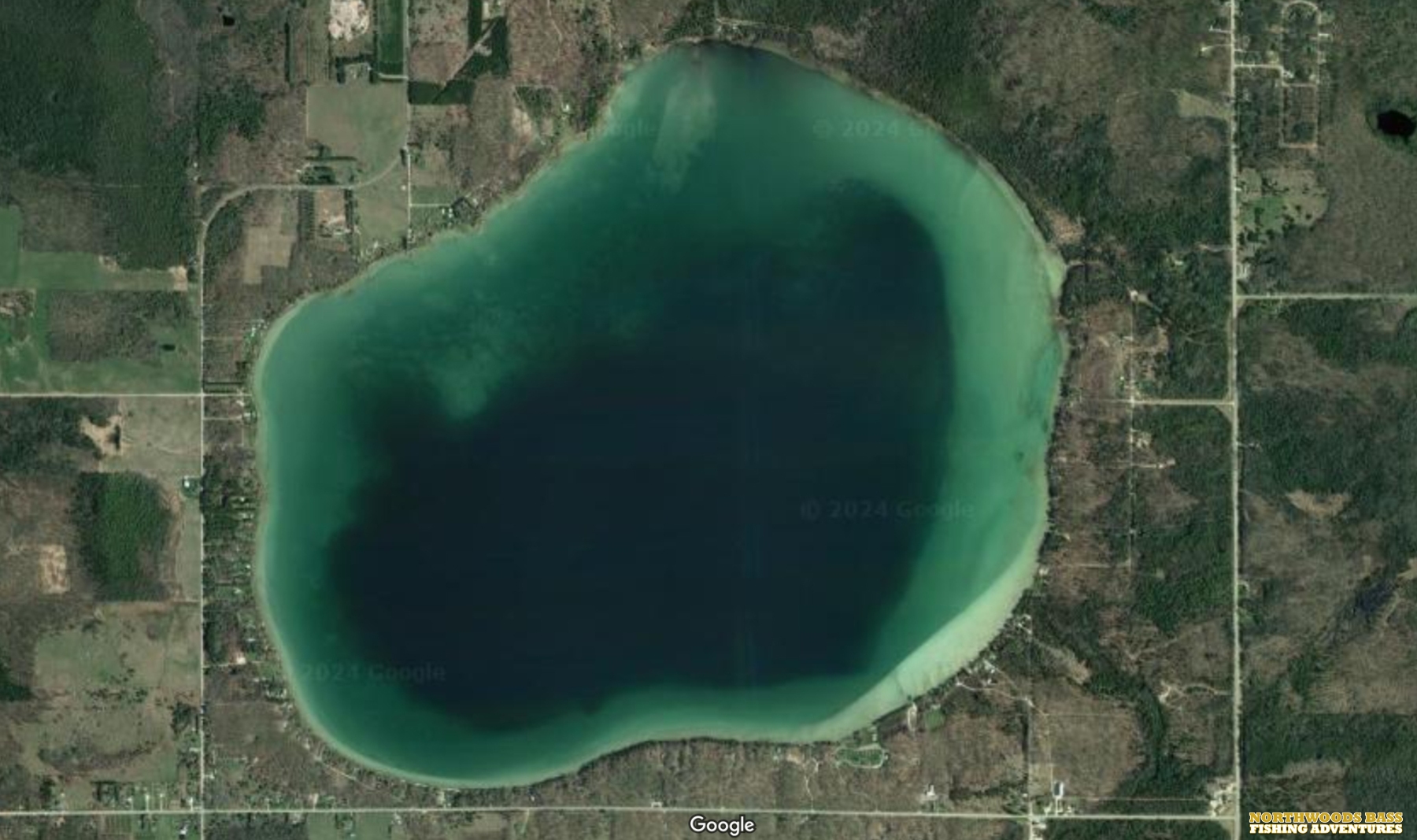
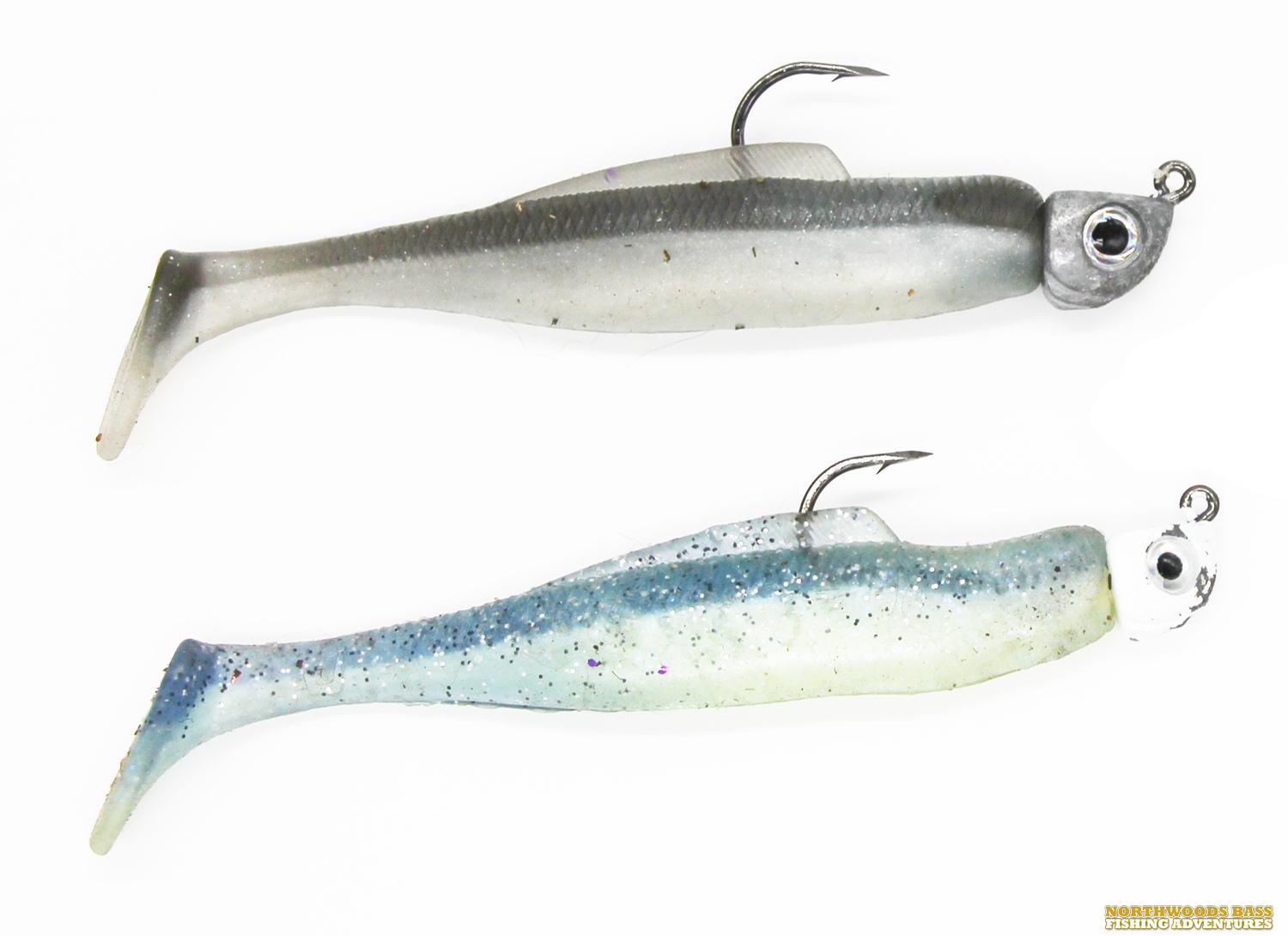
Oligotrophic smallmouths
Without needing to visit northern Canada, where oligotrophic lakes are most common, select inland fisheries are available throughout the northern Great Lakes regions of the U.S. in Wisconsin, northern Michigan (upper and lower), and northeastern Minnesota.
Compared to most other lake types, oligotrophic lakes are lesser in number. They are generally very clear, deep, and cold. The lake substrate is typically firm and sandy. Nutrient levels are low, so the lake generally does not support large populations of aquatic plants or biodiversity. Gamefish present in oligotrophic lakes tend to be very low in abundance but large in size. They are extremely difficult to fish for.
Many oligotrophic lakes divide into two layers in the summer, a condition known as stratification. The lower layer, called the hypolimnion, is cold and supports cold-water specialist fish like lake trout, brown trout, rainbow trout, whitefish, smelt and ciscoes. These species require cold temperatures and high oxygen levels, so they often remain in the lake’s lower level throughout summer.
These low-nutrient, less-fertile oligotrophic waters run colder, are substantially deeper and clearer, and better-oxygenated than most typical smallmouth fisheries. An abundant, high-protein forage base, coupled with their open-water roaming tendencies, lead smallmouths offshore where they will also roam throughout much of the season.
Even though they’re eating, they still grow much slower than average. And they exceed the lifespan of smallmouths almost everywhere else, due to the lake’s infertility enabling them to live long. Additionally, these waters have a very low population density of bass. If you tap into a robust 20- to 25-year-old smallmouth on these waters, it could be pushing 6 to 7 pounds.
Where fish focus on ciscoes (aka tullibee or lake herring) in northern lakes, for example, anglers occasionally connect with the lake’s biggest smallmouths— suspended over 50 or more feet of water— quite by accident. Yet focusing on offshore cisco and smelt migrations can potentially put you on untapped, trophy smallmouth bites.
As water temps broach the mid-60s in early summer, rafts of ciscoes—a salmon relative which live in cooler deep waters—begin making evening ascensions in the water column, from the thermocline and up toward the surface, to feed on zooplankton and insect hatches. When it’s on, as early as end of June, the open-water bite can produce really big smallmouths from these trout waters.
Tapping into these trophies requires an understanding of a fishery’s food web and making these forage connections from point A to B and C. If it has a trout fishery, note that there must also be an abundant pelagic species sustaining it. Its big smallmouths are hunting in the abyss.
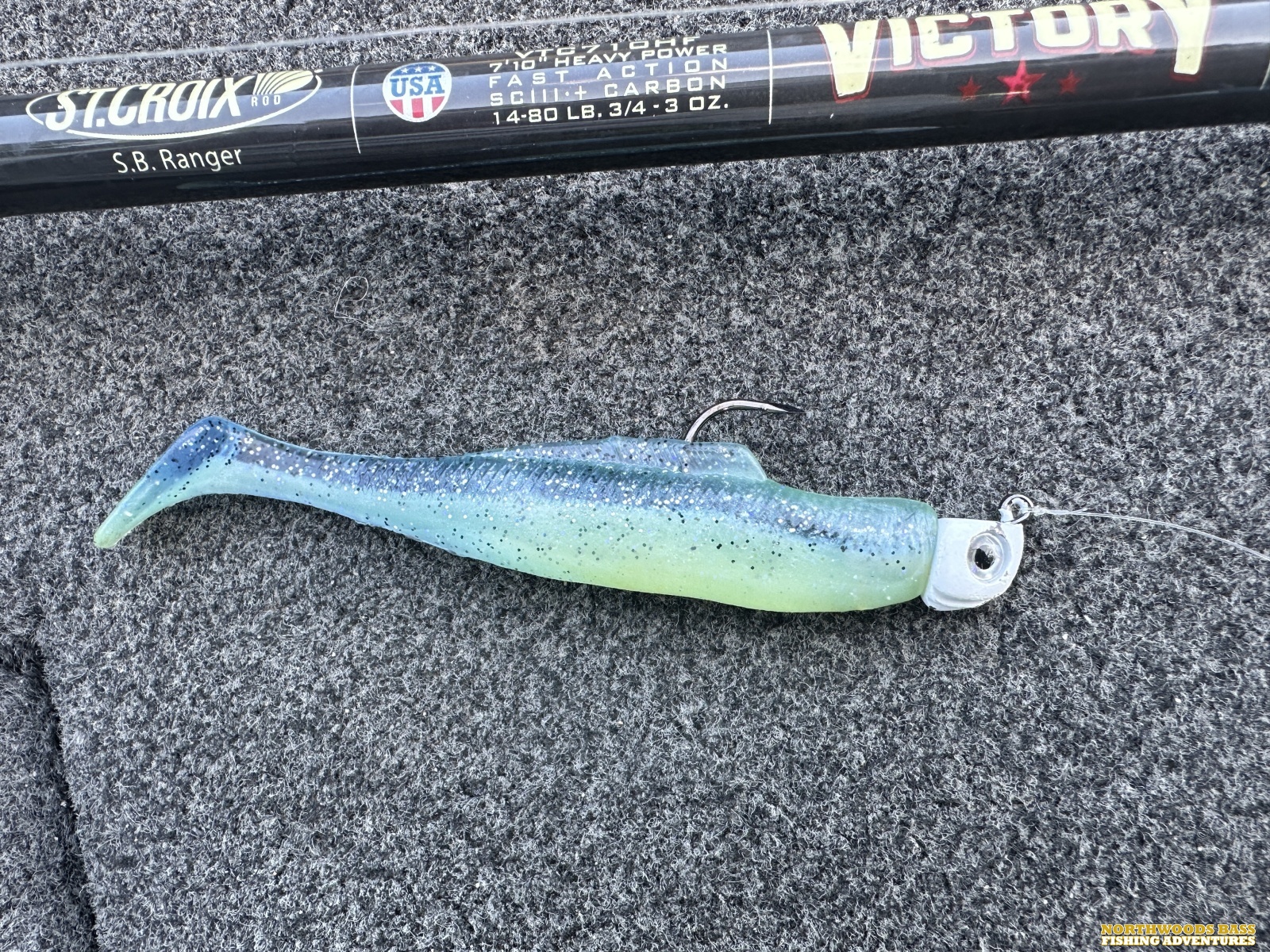
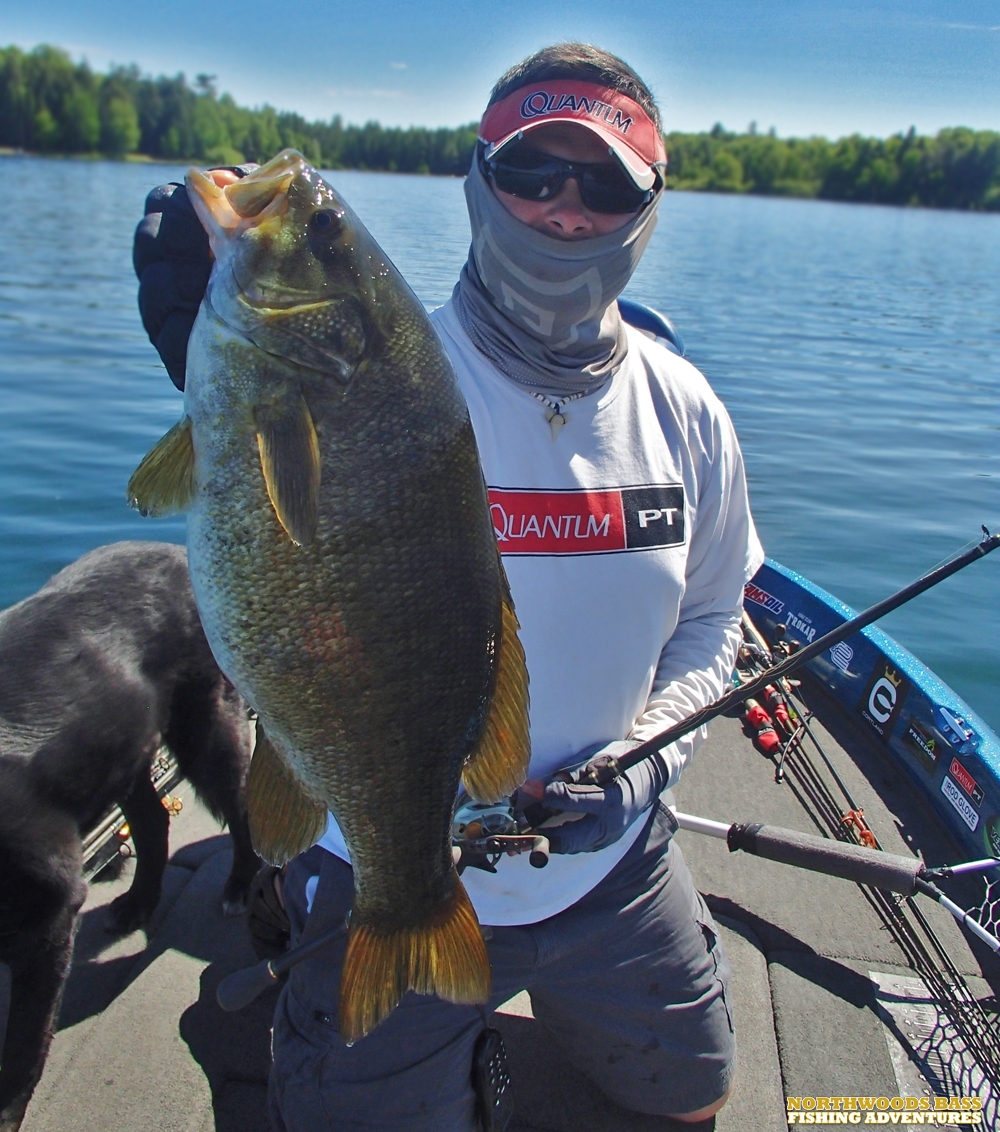
Open-water presentations
Big swimbaits are trending rapidly in present-day smallmouth fishing. Their origins can be traced back to over 30 years ago in the western United States where innovative and pioneering anglers succeed in catching double-digit largemouths from trout fisheries. As swimbait fishing grew and exploded in popularity, its success caught on in other parts of the country, in non-typical bass fisheries it wasn’t intended for.
The notion of using a 6- to 12-inch, soft plastic forage imitators to target mega fish captivated the imaginations of bass anglers elsewhere, including myself. Selecting baits for specimens like these now happens in my boat with more regularity.
Are you enjoying this post?
You can be among the first to get the latest info on where to go, what to use and how to use it!
Two systems go to work for me. The 6-inch Megabass Magdraft is one but has limitations as far as how deep it can be fished (10 feet or less). Alternatively, the 5-inch and 7-inch Z-Man Diezel Minnow, rigged on a 3/4-ounce jighead, allows better suspended depth coverage.
The streamlined shape enables the Magdraft to be successfully retrieved with slow to medium speed. This also helps minimize rolling. It must be retrieved at the proper lower speed, as suggested. The soft body and lively tail shimmies and wiggles during every foot of the retrieve.
I treat the Magdraft as a big fish search bait. It’s become my secret weapon on trophy hunts and under tough fishing conditions that require an attention-seeker of a bait.
Over the years, I’ve observed many targeted fish flash and shadow underneath my baits, or barely punch them, only to blast away from the scene. Big fish are notorious for checking out horizontal baits on a straight retrieve before committing to them. The Magdraft sells a lifelike illusion.
Smallmouths have no problem taking down a 5- to 8-inch cisco. A better and more usable performer I’ve found is a beefy jig and paddletail combo. A 5-inch Z-Man DieZel MinnowZ on a 3/4- to 1-ounce jighead (such as a 3/0 Swimbait Eye or Trokar Boxing Glove) shows these trout fishery smallmouths the optimal size and profile. You want a heavier jighead, too, which helps activate the bait and give it a fast thumping, fleeing action.
Z-Man’s “disco cisco” DieZel MinnowZ pattern nails the blue/green/silver coloration of the species and has been my go-to in the last year.
The ideal paddletail swimbait presentation is a bomb cast followed by a steady, slow-rolling retrieve. Bites often occur within the first few cranks of the reel, but keep the bait moving all the way back, because big smallmouths often follow and bite right beneath the boat.
For 6-inch and larger baits, consider getting a good swimbait rod to help handle the load. The surge in popularity has led to the creation of an entirely new rod sub-category in bass fishing, solely catering to swimbait fishing.
Rod selection should be determined by lure length and weight. Swimbaits are also meant to be cast at long distance. Ideally, you should seek a 7 1/2- to 8-foot, heavy-power, soft-action rod to best handle the load and bury the treble hook on the set.
The best swimbait-specific rod I have found for slinging and usage is the St. Croix Victory S.B. Ranger (VTC710HF). It’s a 7-foot, 10-inch heavy-fast rod with a flexible, reactive tip section. Rated for baits up to 3 ounces, it easily handles most large swimbaits and even Alabama Rigs. One unique feature of this rod is the soft, thick, EVA foam handle. This prevents casting fatigue and supports cushioning as the rod is clutched against the torso.
Good swimbait rods cast far, but also have the backbone for good hooksets. Don’t make the mistake of setting too prematurely. If you feel any light taps, continue retrieving until the rod loads. Then set the hook. Otherwise, swings and misses can accumulate quickly. And you’ll blow some heartbreakers. Smallmouths are notorious for punching, ramming, and slapping these baits before fully committing to them.
Casting reels should be 300 to 400 size. Presently, the best handling line I’ve found is Sunline Sniper FC 17- and 20-pound test.
Solving two-story fisheries
Every trophy smallmouth bass fishery is driven by food availability, and their populations have specific feeding preferences. On these nondescript trophy smallmouth waters, a combination of its pelagic baitfish species are feeding the trout.
To maintain their heavyweight status, big smallmouths require these high-protein meals. On deep, clear, trophy lakes where aquatic biomass is low, bait is less available. Therefore, smallmouths can feed less.
This relationship and dependency to forage is exactly like the stocked rainbow trout/largemouth fisheries out West. Just like those largemouths, these oligotrophic smallmouths are taking advantage of a larger-sized prey that’s most catchable and vulnerable to them.
Despite inland trout fisheries being limited in number compared to other inland fishery types, some of the largest and heaviest inland smallmouths I’ve caught in my lifetime have come from these types of waters in Wisconsin and in the U.P. of Michigan.
Do some research to see what lakes in your area have native or stocked trout fisheries. Then look into whether they also have smallmouths, via surveys or from angler word of mouth. I also rely on Google satellite maps as an accurate research tool for finding these waters. A lake’s sandy shored and crystal-clear appearance from the sky overhead is often a dead giveaway to it being a likely trout fishery home to monster smallmouths.
MWO
SHARE THIS POST
Did you enjoy this post?
You can be among the first to get the latest info on where to go, what to use and how to use it!
Andrew Ragas
Andrew Ragas splits time between Chicago and Wisconsin’s Northwoods. Based in Minocqua, Wis., he specializes in trophy bass fishing and offers guided trips from May through October. While big bass are his passion, he dabbles in multispecies, as well. He may be visited online at northwoodsbass.com
